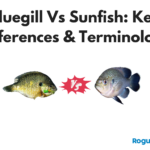Spinning reels are one of the most popular fishing reel types available on the market. Newbies and experienced fishers most extensively use them. Providing versatility and adaptability to almost all fishing types, there are.
They are also generally rather affordable too. You can even grab one below $50 or $100 if you are on a tight budget!

Although, if you want to get the absolute best out of them, regardless of how cheap you managed to get yours for, you need to understand how to spool your reel properly. If you can do this properly, you will avoid many hassles and problems while fishing. You can avoid irritating problems such as twists, foul-ups, and of course, the dreaded bird’s nest.
Similarly, this is the right place to be if you are seeking to get your line on an open-faced reel since this is just another name for a spinning reel.
Today, we have all you need to know, including facts about types of lines, and as you’ll see below, a step-by-step guide on how to spool a spinning reel.
Spooling a Spinning Reel: Step-By-Step
Our following step-by-step guide applies to using monofilament or fluorocarbon line; a bit further down, we have instructions for those of you who may choose to use a braid.
You want to familiarize yourself with the parts of a spinning reel before you start, grab your set up and make sure you have in front of you; your spinning reel, your fishing line, your fishing rod, and a line cutter (or scissors, whatever is best.)
- First things first, lay your spool of fishing line flat on your tabletop and hold your reel over the spool. Turn the handle and note whether or not the bail is rotating in the same direction as the line coming off the spool. If it isn’t, turn to the spool to face the other way; this will ensure that the line comes off the spool in the same direction as it is being wound onto the spool. You could do it the other way, but this way avoids twisting lines, and really if that’s something you desperately want to avoid, it is essential.
- Now, it is time to fasten the reel onto the rod handle and lay it down on a tabletop with the bail arm open. Then pass the line from the spool through the first eye of the fishing rod (learn about the best swimbait rods here), then tie it onto the spool with a double over-handed knot. Once you have tied this knot, cut any extra line that is protruding from the knot.
- Once this is done, you are ready to start spooling the line onto the reel, closing the bail arm, picking up your rod, starting reeling in line. As you do so, use your other hand to hold the line between the reel and the first eye of the rod, applying tension during this process. Doing so helps avoid twisting and allows you to fit more lines onto your reel.
- As you do this, your filler spool should be lying flat on the tabletop with the line coming off it and onto the reel. You should continue to fill the spool until it is filled within one-eighth of an inch of its edge.
- Once your reel is filled to one-eighth of an inch, cut off the line, and you’re done spooling your spinning reel.
Learning to spool your reel properly can make a big difference to your performance on the water; it will make your fishing more enjoyable and help you feel more confident to cast further out and retrieve your lure with fewer line foul-ups.
Best Line for a Spinning Reel
Before you spool a spinning reel or even think of it, you must ensure that you choose the correct line for it. In many cases, you will find the recommended line capacity written on the spool of your spinning reel, which is very helpful.
This line capacity will refer to the optimal pound strength of the line to use on it and the line length it can hold. The optimal line strength that you should choose depends on the size of your reel.
As well as choosing the correct strength, you must also decide what type of line you will spool onto your reel. There are three choices;
- -Monofilament
- -Fluorocarbon
- -Braid
Each of these line types has its pros and cons.
- Monofilament– Monofilament is a single-stranded line type. It often floats on top of the water; this makes it an ideal choice for topwater fishing, using floating baits, or using bobbers. It can have a lot of elasticity which can be problematic, especially if you are trying to hook a fish at a substantial distance. The line stretch would reduce your ability to set the hook efficiently. However, this can also make fishing big fish on a light spinning tackle fantastic, as the elasticity prevents any breaks.
- Braided- Braided lines are made from several lines twisted around each other to form a tight braid. It makes it very strong and durable, which is best for tackling large fish. It also does not stretch and sinks very well; hence it is great for distance fishing. However, it does give it greater visibility than the other line types, which can be an issue in clear waters. You can get around this by using a mono or fluoro leader tied to the braid.
- Fluorocarbon- Fluorocarbon is also single-stranded, its main advantage being its near invisibility, a great way to catch those more timid fish in clear waters. It is more sinkable than a monofilament line, so it is good for bottom fishing. It also lacks any stretch, which makes it easier to set the hook.
If you are more of a finesse fisher, you should go with a monofilament or a fluorocarbon line; you could use a braid with a leader, though. It all depends on how you fish.
Spooling and Spinning Reel with Braid

While we have already discussed the basics of spooling a spinning reel with a monofilament or fluorocarbon line, it is also important to know how to spool a spinning reel with a braided line. It is similar to spooling with monofilament, but you should take a few additional measures.
- First of all, you need to have a monofilament line and a braided line ready. Since you will fill the first part of your spool with monofilament and the rest with braid, start as you normally would, and use a double over-handed knot to tie the monofilament line to your spool. Then start filling the spool until it is about halfway full.
- Next, you should cut the monofilament line and use an Albright knot to tie it to the end of the braided line.
- Once you have attached these two lines, you need to continue to fill your spool with the braided line. Spooling with a braided line can cause something called ‘rope burn’; to avoid this, you can run the line through a wet rag instead of your bare hands.
- Continue to spool until there is one-eighth of an inch left remaining at the spool edge. Then cut off the end, and you are all done and ready to start fishing!
To Conclude
Filling a spinning reel with a line can be very easy. But like anything, perfection comes with practice; using a line such as a monofilament or a fluorocarbon line is easy enough to do, and after some practicing, you will be filling your spool in a flash, like it’s second nature. Spooling with a braided line can be a little more difficult and take more time to get used to, but it is not a massive challenge. Like many other things, this, too, just takes practice.
The biggest challenge of a braided line is the additional knot you need to make between the monofilament line and the braided line and ensuring you do not give yourself ‘rope burn’ when spooling the braided line.
What line you choose to use is totally up to you, where you fish, and what you are fishing for. If you are experimenting with your fishing, there is no reason you can’t try out all three line types to find the one that you feel most comfortable with using out on the water.





